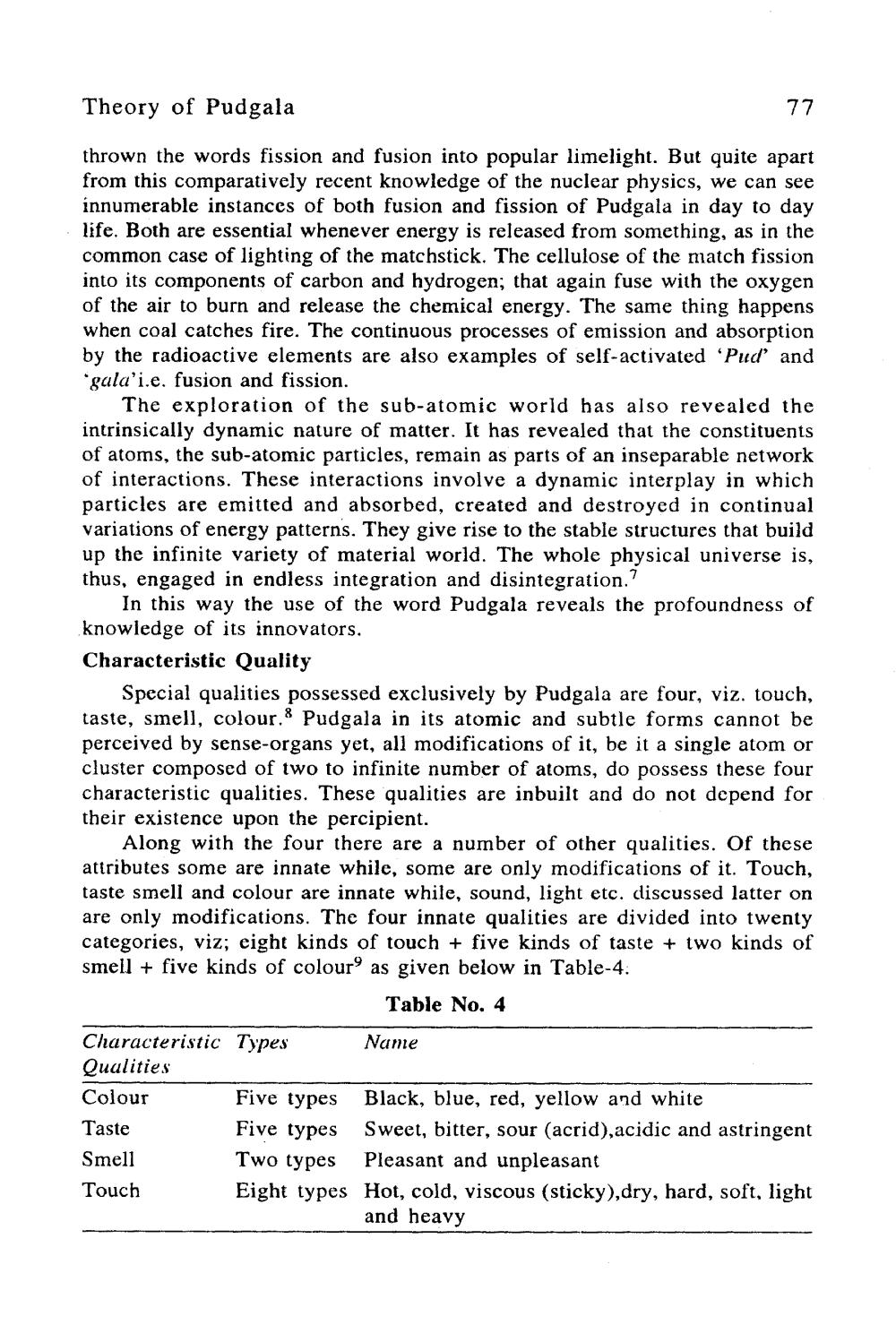________________
Theory of Pudgala
77
thrown the words fission and fusion into popular limelight. But quite apart from this comparatively recent knowledge of the nuclear physics, we can see innumerable instances of both fusion and fission of Pudgala in day to day life. Both are essential whenever energy is released from something, as in the common case of lighting of the matchstick. The cellulose of the match fission into its components of carbon and hydrogen; that again fuse with the oxygen of the air to burn and release the chemical energy. The same thing happens when coal catches fire. The continuous processes of emission and absorption by the radioactive elements are also examples of self-activated 'Pud' and *gala'i.e. fusion and fission.
The exploration of the sub-atomic world has also revealed the intrinsically dynamic nature of matter. It has revealed that the constituents of atoms, the sub-atomic particles, remain as parts of an inseparable network of interactions. These interactions involve a dynamic interplay in which particles are emitted and absorbed, created and destroyed in continual variations of energy patterns. They give rise to the stable structures that build up the infinite variety of material world. The whole physical universe is, thus, engaged in endless integration and disintegration.?
In this way the use of the word Pudgala reveals the profoundness of knowledge of its innovators, Characteristic Quality
Special qualities possessed exclusively by Pudgala are four, viz. touch, taste, smell, colour.8 Pudgala in its atomic and subtle forms cannot be perceived by sense-organs yet, all modifications of it, be it a single atom or cluster composed of two to infinite number of atoms, do possess these four characteristic qualities. These qualities are inbuilt and do not depend for their existence upon the percipient.
Along with the four there are a number of other qualities. Of these attributes some are innate while, some are only modifications of it. Touch, taste smell and colour are innate while, sound, light etc. discussed latter on are only modifications. The four innate qualities are divided into twenty categories, viz; eight kinds of touch + five kinds of taste + two kinds of smell + five kinds of colouro as given below in Table-4.
Table No. 4 Characteristic Types Name Qualities Colour Five types Black, blue, red, yellow and white Taste
Five types Sweet, bitter, sour (acrid), acidic and astringent Smell
Two types Pleasant and unpleasant Touch
Eight types Hot, cold, viscous (sticky),dry, hard, soft, light
and heavy




